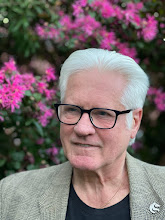In my roles as a critic and erstwhile creator of popular culture, I am fascinated by the dynamic of heroism and villainy in fictional narrative. For some time now, I’ve been running a weekly “Sunday Supervillainy” segment on my personal blog as a bit of slightly-lighter relief, and this has proved quite popular (I usually focus on events in the universe of Marvel Comics, which I grew up on as a child and have an affection for, but sometimes I go wider, and I occasionally use it as an excuse to make connections with real-world villainy of one kind or another).
I’m particularly fascinated by many of the modern tropes relating to villainy and types of villainy (these tend to have their own names over at TV Tropes, such as … look this list).

And I’m especially fascinated by the phenomenon of villains becoming popular characters in their own right. Notoriously, the eponymous villain of The Terminator (1984) obtained much audience identification, and Arnold Schwarzenegger was brought back for successive movies in which he played the roles of visually identical characters that were presented as heroes. The moral is simply that villains can be cool. Even such a malevolent character as the psychopathic cannibal Hannibal Lecter has a huge fan following.
And I’m especially fascinated by the phenomenon of villains becoming popular characters in their own right. Notoriously, the eponymous villain of The Terminator (1984) obtained much audience identification, and Arnold Schwarzenegger was brought back for successive movies in which he played the roles of visually identical characters that were presented as heroes. The moral is simply that villains can be cool. Even such a malevolent character as the psychopathic cannibal Hannibal Lecter has a huge fan following.
Looking to the Marvel Comics universe, major villains such as Doctor Doom, Magneto, and Thanos are more popular characters than most of the heroes – and it’s not just a case of loving to hate them. Rather, there’s a fan identification with them and their exploits. People want to see them perform well and even obtain victories. Much the same applies to fan-favourite villains a bit lower down the pecking order (such as the Juggernaut, and one of my personal favourites, Moonstone). Marvel still has a few important villains that no one identifies with or roots for (I hope!) such as the Red Skull (a grotesque and hateful Nazi) and Ultron (a megalomaniacal killer robot), but there’s really not much that’s “nice” about Doctor Doom or Thanos, and even the more sympathetic Magneto is a self-righteous, ruthless, overbearing killer – even apart from his actual crimes, he’d be insufferable to deal with. Yet, characters like these, and of course, Darth Vader from the Star Wars movies seem to capture imaginations and loyalties.
My question for the day is simply what makes some of these malevolent fictional characters not only believably charismatic within the diegesis but actually charismatic figures in our world – in that they attract fans who cheer for them, buy posters of them, and want to read stories, see movies, etc., that are focused on them? On the face of it, it seems odd that narratives which depict the struggle between good and evil end up generating evil characters who are somehow alluring enough to attract their own large fan bases like this. I’m not suggesting that there’s anything wrong with the situation, though some of you might want to argue along those lines, but there is definitely something about it that seems paradoxical. What’s going on here?
I do have some ideas, but I’ll stop. Let’s discuss.

No comments:
Post a Comment